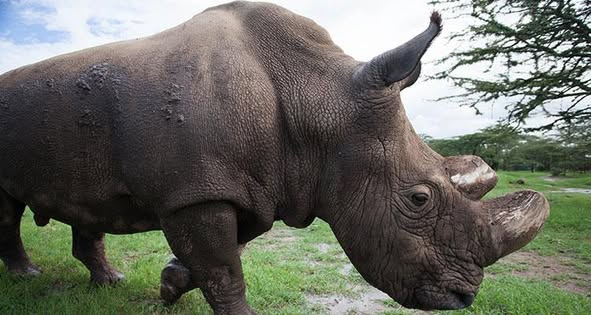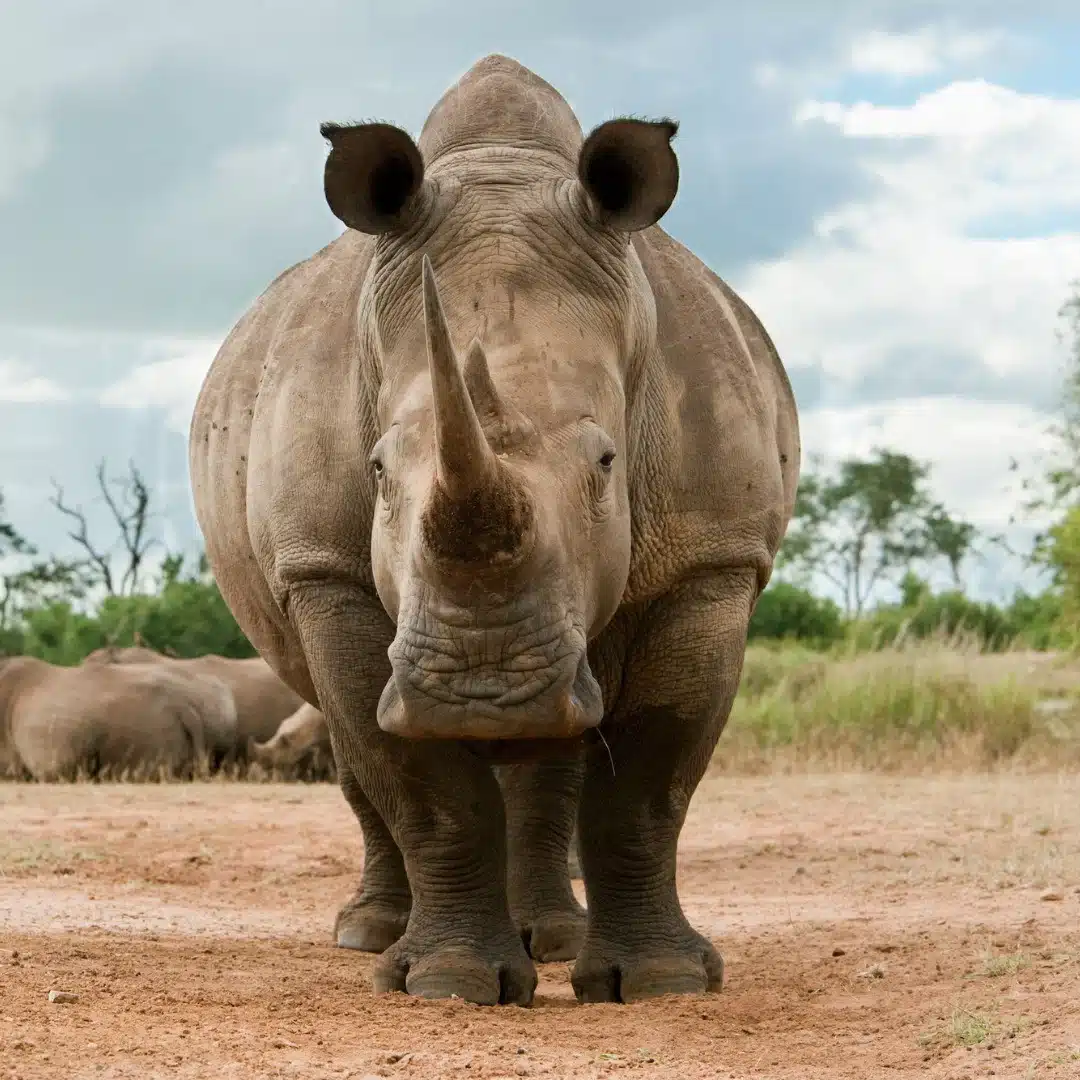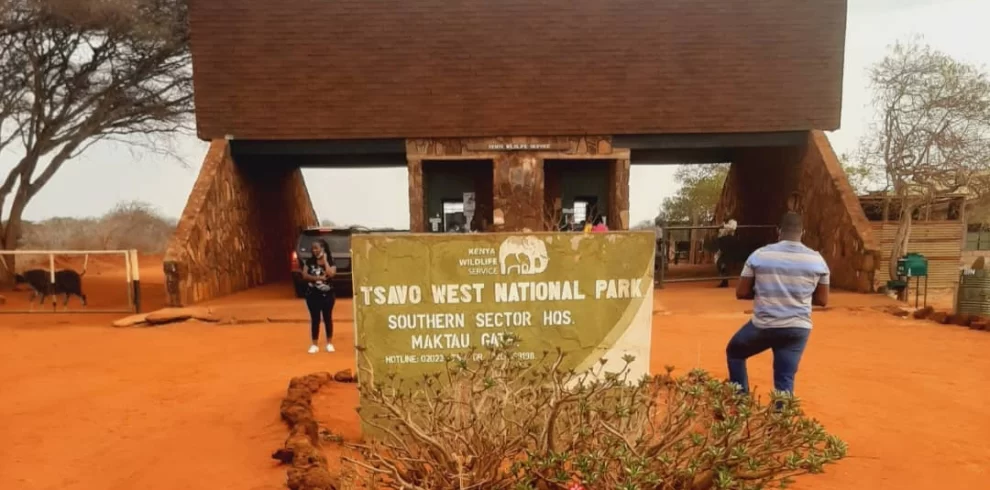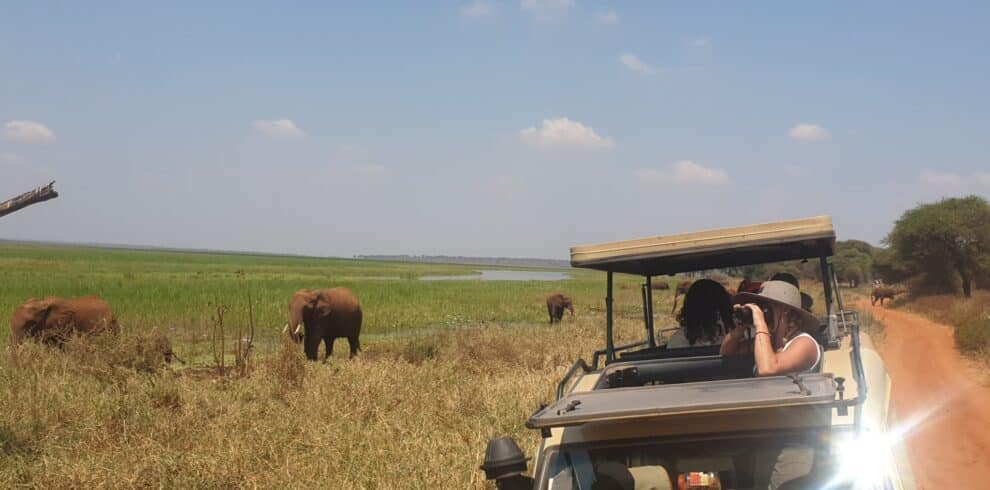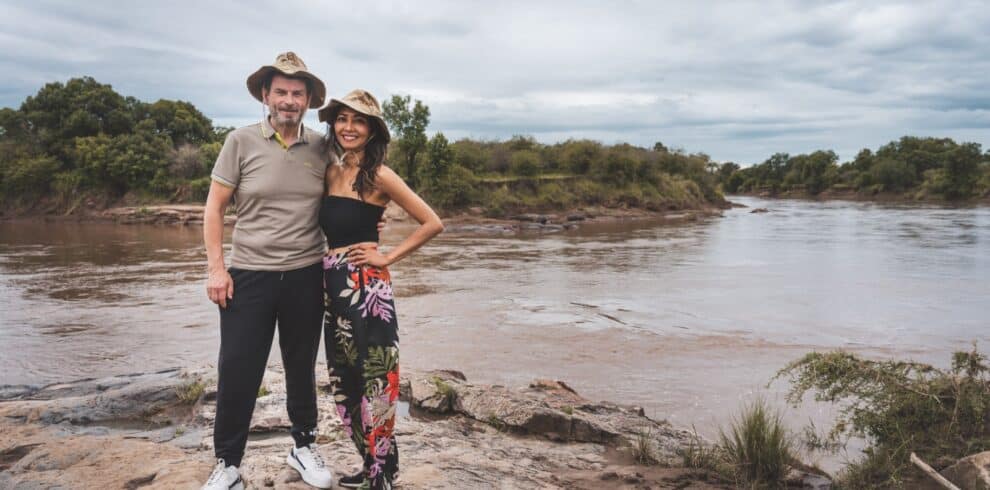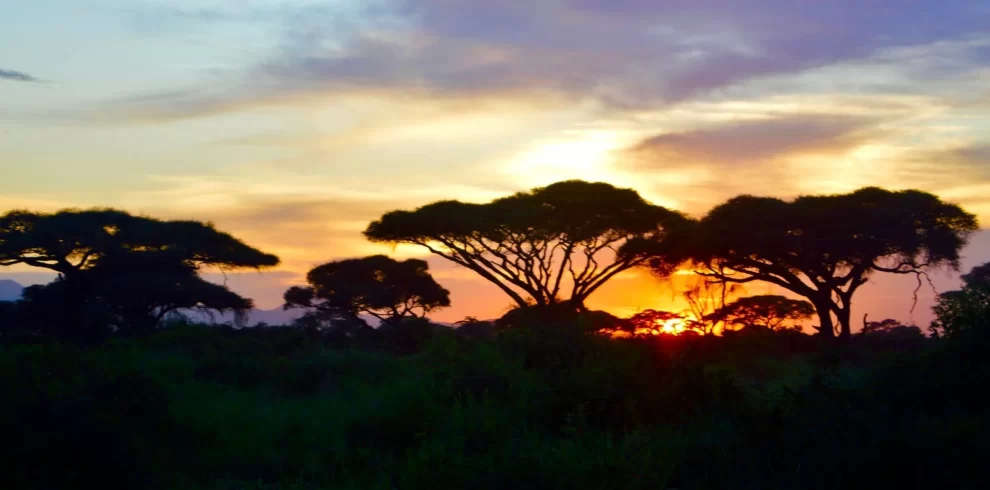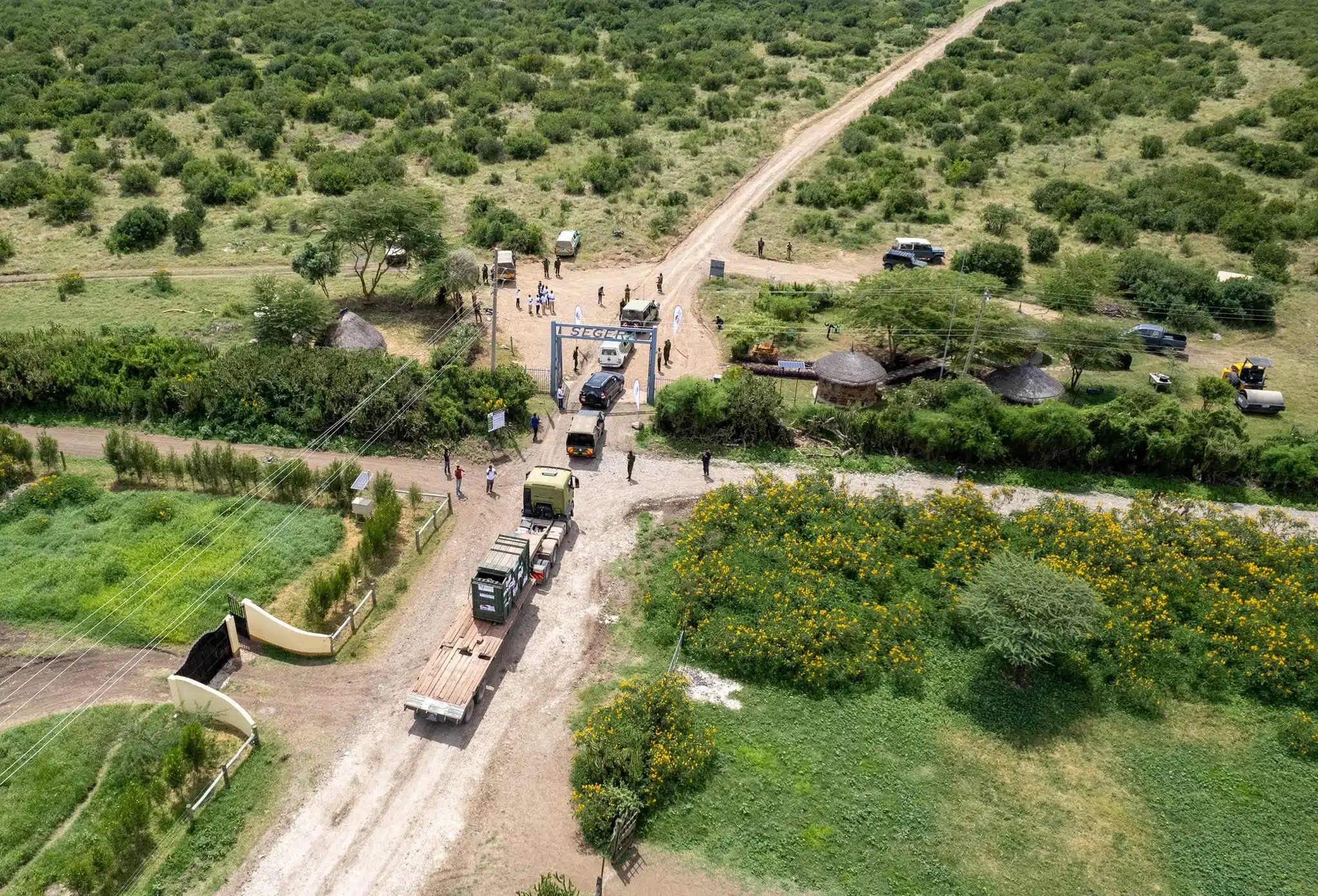Black rhinos (Diceros bicornis) are one of the two species of rhinos found in Africa, the other being the white rhino. Despite their name, black rhinos are actually gray, with their color varying from brown to grayish-black. These fascinating animals are primarily found in East and Southern Africa, in countries like Kenya, Tanzania, Zimbabwe, and South Africa.
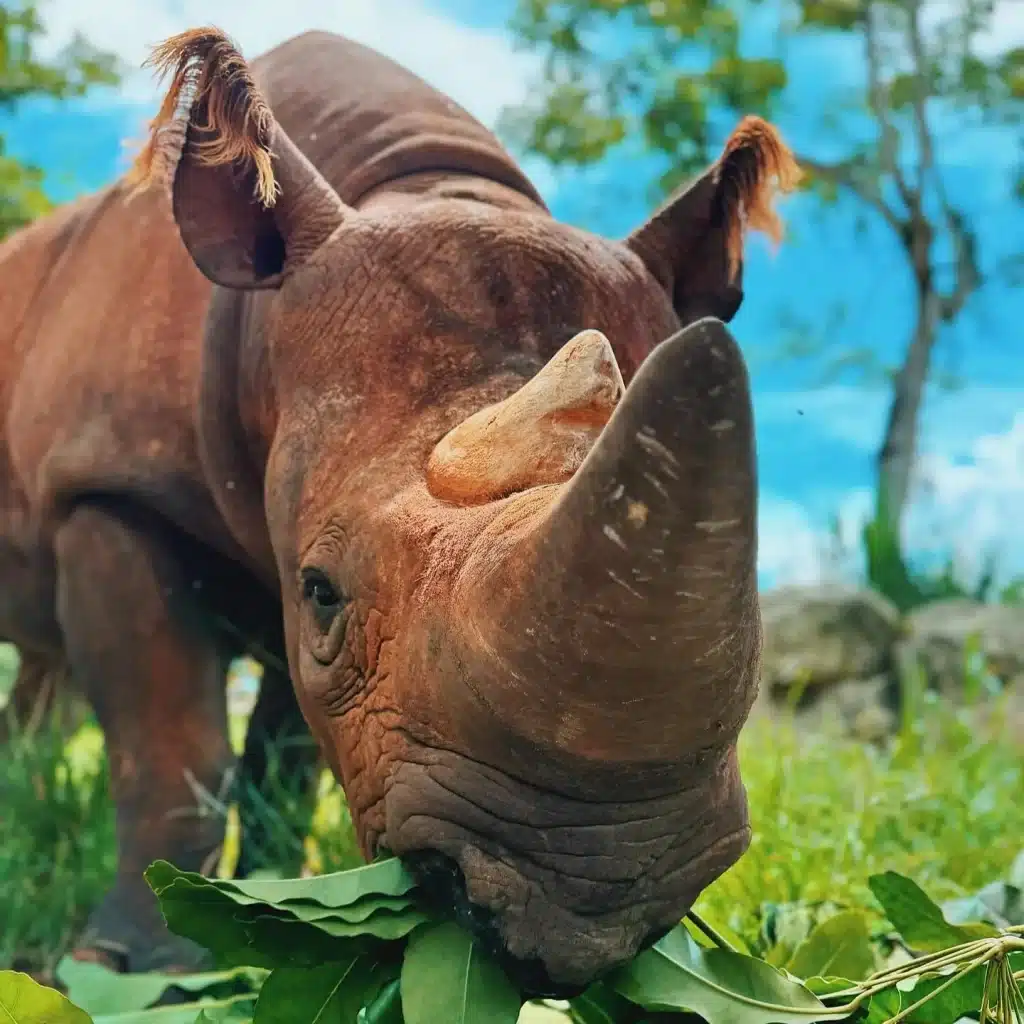
Here are some key facts about black rhinos:
- Physical Features:
- Black rhinos have a pointed, hooked lip, which is different from the square-shaped lip of the white rhino. This allows them to feed on a variety of vegetation, including shrubs, branches, and fruits.
- They are smaller than white rhinos, with males weighing between 1,800 to 3,000 pounds and females between 1,000 to 1,800 pounds.
- Habitat:
- They are found in a range of habitats, including savannas, forests, and grasslands, but they prefer areas with dense vegetation where they can find food and shelter.
- Diet:
- Black rhinos are herbivores and have a diet that consists mainly of shrubs and bushes. Their diet varies based on the region and season, with occasional consumption of fruits and grass.
- Behavior:
- Black rhinos are known to be more solitary and territorial than white rhinos. Males are usually solitary, while females can live with their offspring.
- They are also more aggressive, especially when threatened. Despite their tough exterior, they have poor eyesight and often rely on their keen sense of smell to detect danger.
- Conservation Status:
- Black rhinos are classified as “Critically Endangered” by the International Union for Conservation of Nature (IUCN). Their population has drastically declined due to poaching for their horns and loss of habitat.
- Conservation efforts have included anti-poaching patrols, habitat restoration, and rhino relocation projects, as well as strict protection laws. As of recent estimates, there are approximately 5,000 black rhinos left in the wild.
- Breeding:
- Female black rhinos typically give birth to a single calf after a gestation period of around 15 to 16 months. Calves stay with their mothers for up to 3 years before becoming more independent.
Black rhinos play a critical role in their ecosystem by influencing the structure of vegetation, which in turn affects other species. Protecting them is vital for maintaining the biodiversity of their habitats.
Subspecies of Black Rhinos
There are four recognized subspecies of the black rhino, each adapted to different habitats and regions in Africa:
- Southern Black Rhino (Diceros bicornis bicornis):
- This subspecies is found in southern and southeastern Africa, including countries like South Africa, Namibia, Zimbabwe, and Kenya. It is the most numerous of the black rhino subspecies.
- It is found in savannas, scrublands, and open woodlands and has a relatively stable population, though still critically endangered.
- East African Black Rhino (Diceros bicornis michaeli):
- Native to East Africa, particularly Kenya and Tanzania, this subspecies has a more fragmented population compared to the southern black rhino.
- These rhinos are typically found in grassland and savanna habitats, although they are also seen in areas with dense bush.
- South-Central Black Rhino (Diceros bicornis minor):
- Found in central and southern Africa, particularly in countries like Botswana and Zambia. This subspecies is critically endangered with a relatively small population remaining in the wild.
- They are primarily found in dense woodlands and bushlands.
- Western Black Rhino (Diceros bicornis longipes):
- This subspecies once inhabited parts of West and Central Africa, but it was declared extinct in 2011 after extensive surveys failed to find any individuals in the wild.
- The loss of this subspecies is a significant blow to black rhino conservation.
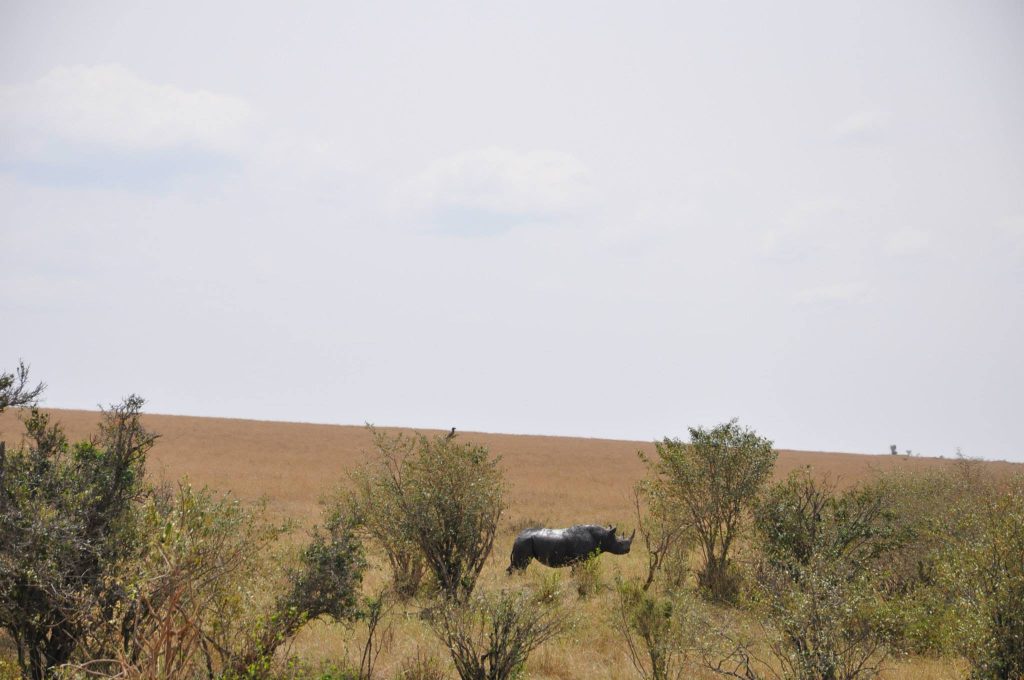
Behavior and Social Structure
- Solitary Nature: Black rhinos are generally solitary animals, especially males. They tend to avoid each other, except during mating seasons. Males are territorial, and they mark their territories using urine and feces, which they often smear on trees and bushes.
- Females and Calves: Female black rhinos, however, may stay with their calves for extended periods. A mother and calf often form a strong bond, with the mother teaching the calf essential survival skills, such as where to find food and how to navigate the landscape.
- Communication: Black rhinos have a variety of vocalizations, including grunts, growls, and snorts. They also communicate through body language, including head movements and tail flicks. These signals help to establish dominance or warn other animals of potential danger.
Diet and Feeding Behavior
- Herbivorous Diet: Black rhinos are primarily browsers, feeding on bushes and trees rather than grass. Their diet can consist of various vegetation, including leaves, twigs, fruit, and bark. This makes them different from the white rhinos, which are grazers and feed mostly on grass.
- Feeding Habits: Black rhinos are selective eaters, using their prehensile lips to grasp and strip leaves, branches, and small twigs. They may also uproot plants to get to their roots or bark. Their diet can vary depending on the availability of food in different seasons.
Reproductive Behavior
- Mating and Gestation: Black rhinos have a long gestation period of 15 to 16 months, one of the longest in the animal kingdom. Females usually give birth to a single calf, though twins are rare.
- Reproduction Timing: Females generally become sexually mature between 6 and 7 years old, while males mature later, around 10 to 12 years old. However, males often do not start breeding until they are around 15 years old, as they need to reach a dominant status to win over females.
- Care of the Calf: The mother cares for the calf alone for about 2 to 3 years, though the calf will often stay near its mother’s territory for a longer period. Young calves are highly vulnerable to predators like lions and hyenas, so the mother is very protective.
Threats to Black Rhinos
- Poaching:
- The most significant threat to black rhinos is illegal poaching for their horns, which are highly valued on the black market for use in traditional medicine and as status symbols. The demand for rhino horn, primarily from Asia, has driven black rhinos to the brink of extinction.
- Although international trade in rhino horn is banned, poaching continues due to the high profits it generates.
- Habitat Loss:
- Habitat degradation and fragmentation are also major threats to black rhinos. As human populations grow, rhinos face increasing pressures from land conversion for agriculture, urban development, and the expansion of infrastructure.
- The loss of suitable habitat also makes it difficult for rhinos to find sufficient food and water sources, which impacts their survival.
- Human-Wildlife Conflict:
- In some regions, black rhinos may come into conflict with local farmers and communities, especially if rhinos wander into agricultural areas. This can lead to retaliatory killings by farmers who see them as a threat to their crops or livestock.
Conservation Efforts
- Protected Areas: Many black rhinos are found in protected areas such as national parks, reserves, and wildlife sanctuaries. Countries like Kenya, Zimbabwe, and South Africa have dedicated rhino reserves and national parks with strict anti-poaching measures in place.
- Translocation: Conservation programs often involve relocating rhinos from overcrowded or unsafe areas to more secure locations to improve genetic diversity and ensure the survival of populations.
- Rhino Monitoring and Anti-Poaching Patrols: Extensive efforts are made to track and monitor rhinos using GPS collars and other tracking technologies. Anti-poaching teams patrol protected areas, and there are increasing use of drones and surveillance to monitor rhino movements and detect poachers.
- Community Involvement: Engaging local communities is a crucial aspect of rhino conservation. Many conservation programs focus on educating communities about the importance of rhinos and providing them with alternative sources of income, such as eco-tourism and community-run conservation efforts.

Role in Ecosystem
- Ecological Impact: Black rhinos play an important role in their ecosystem by influencing the structure of vegetation. Their browsing habits help control the growth of certain plants, which in turn affects the types of other animals that can thrive in these areas. This process is known as ecosystem engineering.
- Seed Dispersal: As herbivores, black rhinos also contribute to seed dispersal. By consuming fruits and plants and moving across large distances, they help to spread seeds throughout their habitat, aiding in plant regeneration.
Interesting Facts
- Sharp Sense of Smell: Black rhinos have an extremely keen sense of smell, which helps them detect predators or other rhinos. Despite poor eyesight, they can detect scents from miles away.
- Speed and Agility: Though large and heavy, black rhinos can run at speeds of up to 30-35 miles per hour (48-56 km/h) over short distances. They can also charge at full speed when threatened, which makes them one of the most dangerous animals in Africa.
- Longevity: In the wild, black rhinos can live up to 40-50 years, but many die earlier due to poaching, human conflict, or disease.
Conclusion
Black rhinos are incredibly important for biodiversity and the health of their ecosystems. However, they remain critically endangered, facing multiple threats from poaching, habitat loss, and human-wildlife conflict. Conservation efforts have had some success, but much more needs to be done to protect these magnificent creatures for future generations.
